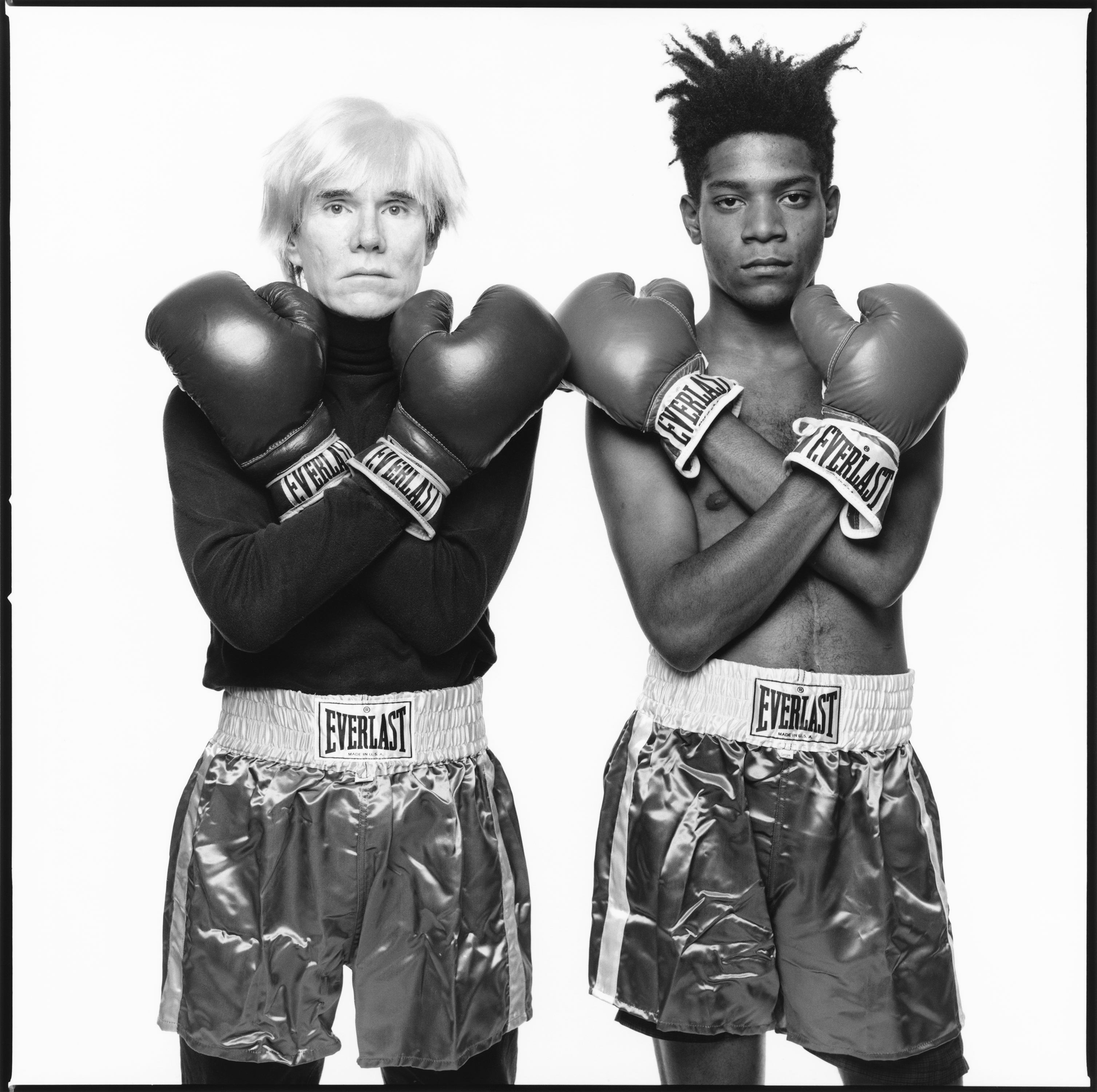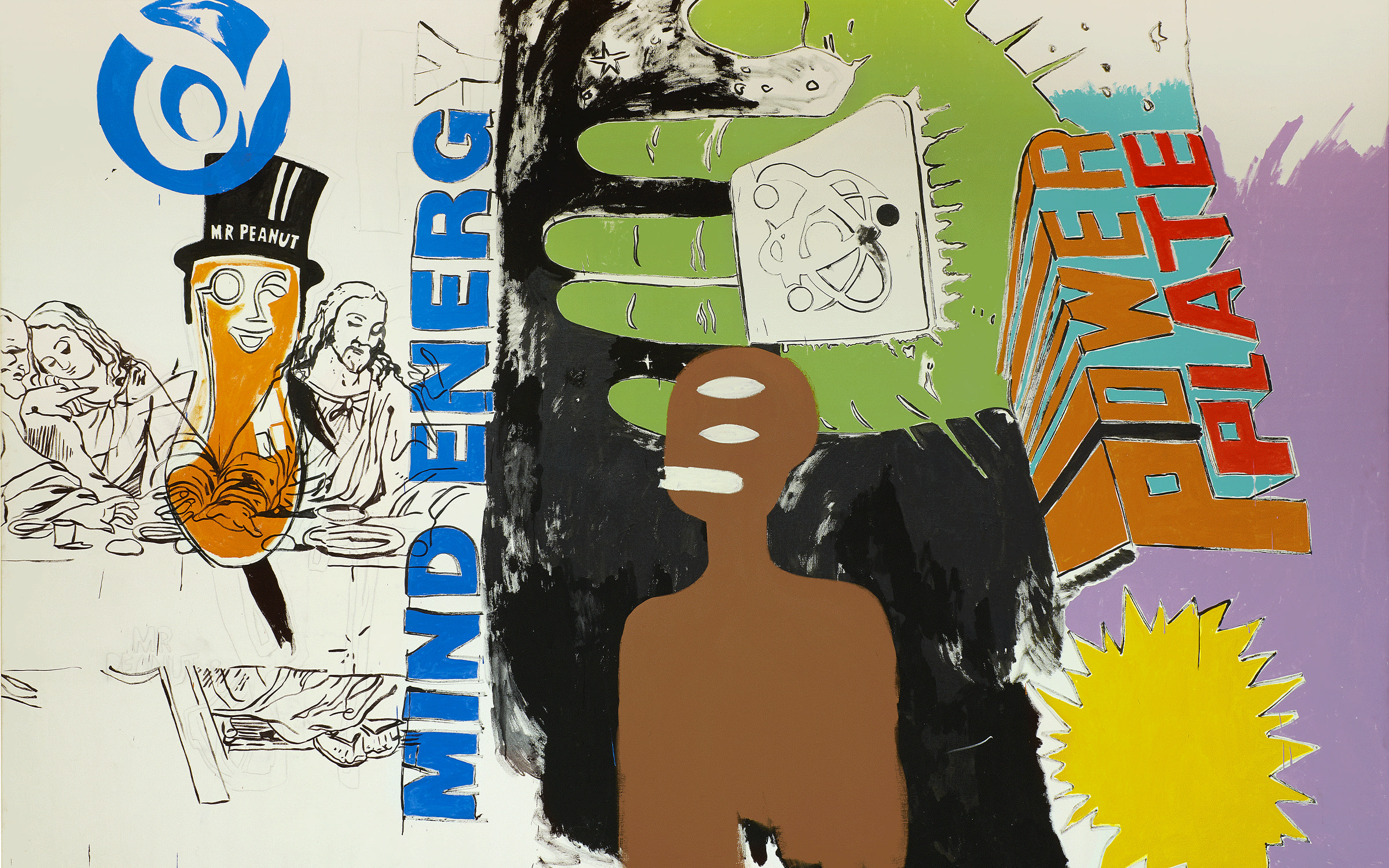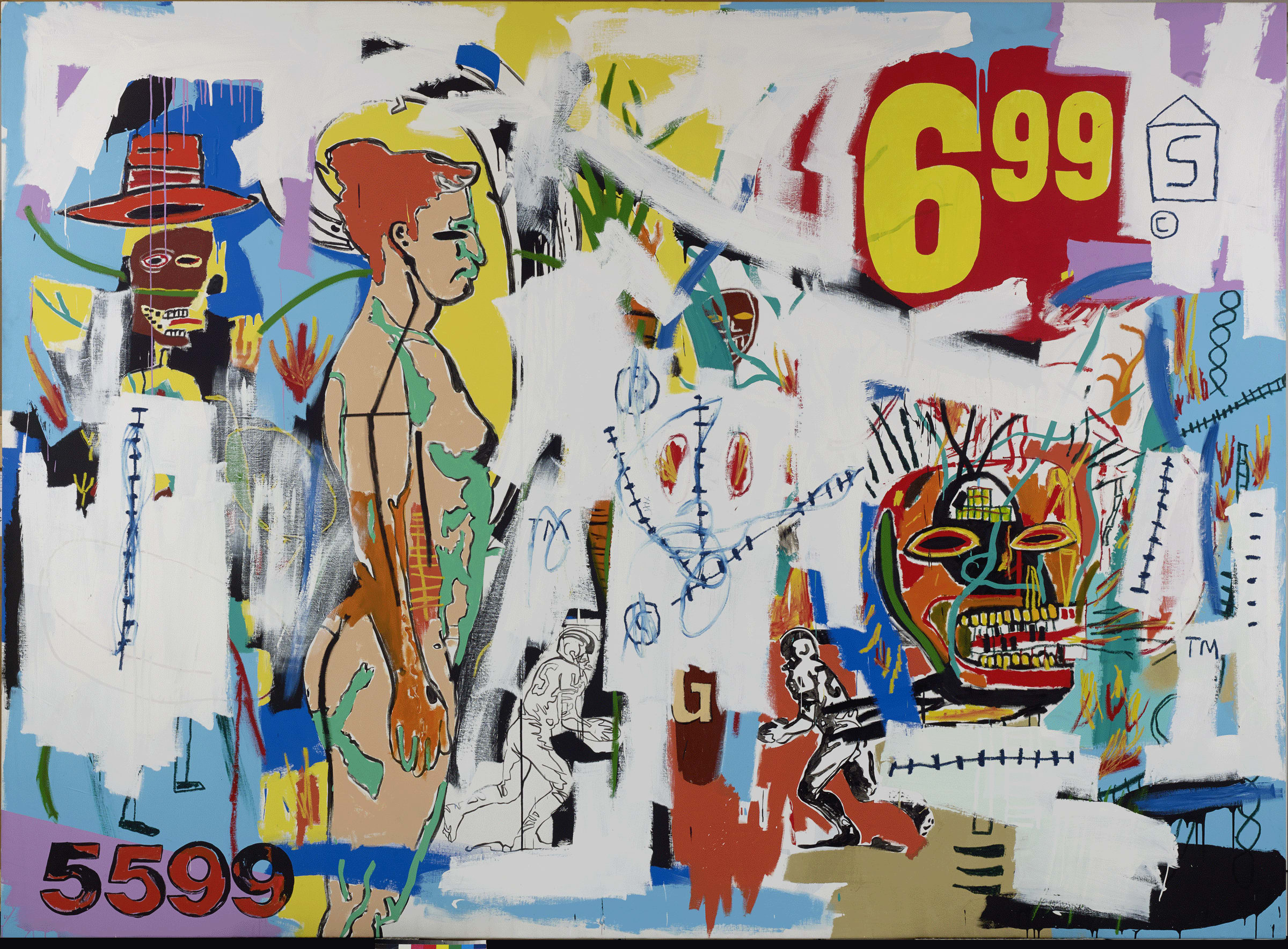In collaboration with Numéro art
Andy Warhol (1928–1987) and Jean-Michel Basquiat (1960–1988) might never have met. In addition to a 32-year age gap, the two artists came from completely different backgrounds. The first, a native of Pittsburgh, graduated in fine arts and made his debut in advertising and shoe design in New York in the 1950s. The second grew up in Brooklyn in the 1960s, raised in a family of Haitian origin, and started his career as a street artist under the now famous alias, SAMO.
Although 1982 is often cited as the year the two first met over lunch, they had in fact already met three years earlier. At the time, Basquiat was only 17 and spent his days on the street trying to sell postcard collages to passersby. One day, he saw Warhol with Henry Geldzahler, then director of the Metropolitan Museum of Art, in a restaurant in Soho, New York. Basquiat took matters into his own hands and approached them with two of his artworks, which they bought for $1 each. Although that moment was unforgettable for Basquiat, it wasn’t as memorable for Warhol, who remained rather dubious about the young artist’s potential over the following years.

In 1983 while Basquiat was staying at Bruno Bischofberger’s place in St. Moritz in Switzerland, the gallery owner was amazed to discover the New York painter’s marks on the drawings of his three-year-old daughter. A brilliant idea came to him: to invite the young art prodigy to create works with other renowned painters, in order to allow his talent to shine through. When he presented the idea to an enthusiastic Basquiat, the latter immediately mentioned Warhol.
This project came at just the right time for Warhol, who, after flourishing in the 1960s, was now more discreet, less daring, and mainly making portraits for celebrities and rich businessmen. Bischofberger also suggested Francesco Clemente, who was close to Basquiat, as a third participant. From 1983 to 1984, the three artists agreed to produce about 15 pieces together and their six-handed project was launched.

